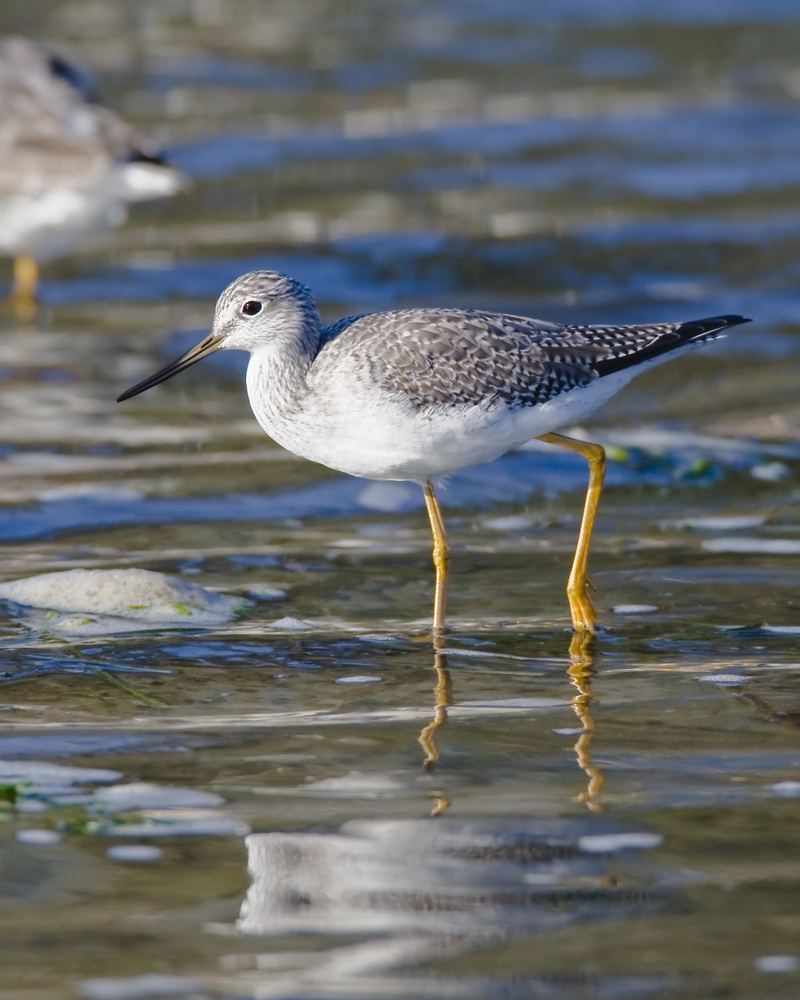|
| Query: tringa | Result: 17th of 276 | |
greater yellowlegs (Tringa melanoleuca)
| Subject: | greater yellowlegs (Tringa melanoleuca)
| | Poster: | Wiki Photos (---@---.---)
| |

| Resolution: 2009x2512
File Size: 2199486 Bytes
Date: 2007:11:19 16:10:27
Camera: Canon EOS-1D Mark III (Canon)
F number: f/7.1
Exposure: 1/400 sec
Focal Length: 840/1
Upload Date: 2017:01:31 00:07:18
|
Description
Greater Yellowlegs (Tringa melanoleuca) in the Morro Bay, CA State Park Marina by the Natural History Museum, Morro Bay, CA.
Date 19 November 2007, 16:10
Source Greater Yellowlegs (Tringa melanoleuca) in the Morro Bay, CA Sta. http://www.flickr.com/photos/72825507@N00/2048920885/
Author Mike Baird (http://bairdphotos.com/) http://www.flickr.com/people/72825507@N00
Source: https://commons.wikimedia.org/wiki/File:Greater_Yellowlegs2.jpg
The greater yellowlegs (Tringa melanoleuca) is a large North American shorebird. The genus name Tringa is the New Latin name given to the green sandpiper by Aldrovandus in 1599 based on Ancient Greek trungas, a thrush-sized, white-rumped, tail-bobbing wading bird mentioned by Aristotle. The specific melanoleuca is from Ancient Greek melas, "black", and leukos, "white". The greater yellowlegs is similar in appearance to the smaller lesser yellowlegs. Its closest relative, however, is the greenshank, which together with the spotted redshank form a close-knit group. Among them, these three species show all the basic leg and foot colors found in the shanks, demonstrating that this character is paraphyletic. They are also the largest shanks apart from the willet, which is altogether more robustly built. The greater yellowlegs and the greenshank share a coarse, dark, and fairly crisp breast pattern as well as much black on the shoulders and back in breeding plumage. Order: Charadriiformes, Family: Scolopacidae, Synonyms: Totanus melanoleucus. |
^o^
Animal Pictures Archive for smart phones
^o^
|
|

